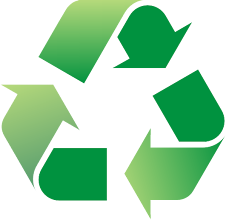Pol yvinyl chloride, (IUPAC Poly(chloroethanediyl)) commonly abbreviated PVC, is a thermoplastic polymer. It is a vinyl polymer constructed of repeating vinyl groups (ethenyls) having one of their hydrogens replaced with a chloride group.
yvinyl chloride, (IUPAC Poly(chloroethanediyl)) commonly abbreviated PVC, is a thermoplastic polymer. It is a vinyl polymer constructed of repeating vinyl groups (ethenyls) having one of their hydrogens replaced with a chloride group.
 yvinyl chloride, (IUPAC Poly(chloroethanediyl)) commonly abbreviated PVC, is a thermoplastic polymer. It is a vinyl polymer constructed of repeating vinyl groups (ethenyls) having one of their hydrogens replaced with a chloride group.
yvinyl chloride, (IUPAC Poly(chloroethanediyl)) commonly abbreviated PVC, is a thermoplastic polymer. It is a vinyl polymer constructed of repeating vinyl groups (ethenyls) having one of their hydrogens replaced with a chloride group.Polyvinyl chloride is the third most widely produced plastic, after polyethylene and polypropylene. Over 50% of PVC manufactured is used in construction,[citation needed] because it is cheap, durable, and easy to assemble. PVC production is expected to exceed 40 million tons by 2016.
It can be made softer and more flexible by the addition of plasticizers, the most widely used being phthalates. In this form, it is used in clothing and upholstery, and to make flexible hoses and tubing, flooring, to roofing membranes, and electrical cable insulation. It is also commonly used in figurines and in inflatable products such as waterbeds, pool toys, and inflatable structures.
Applications
PVC's intrinsic properties make it suitable for a wide variety of applications. It is biologically and chemically resistant, making it the plastic of choice for most household sewerage pipes and other pipe applications where corrosion would limit the use of metal.
With the addition of impact modifiers and stabilizers, it becomes a popular material for window and door frames. By adding plasticizers, it can become flexible enough to be used in cabling applications as a wire insulator. Example : Clothing, Electric wires, Pipes, Portable electronic accessories, Signs, Joining, Ceiling tiles, Unplasticized polyvinyl chloride (uPVC), etc.
Recycling
Post-consumer PVC is not typically recycled due to the prohibitive cost of regrinding and recompounding the resin compared to the cost of virgin (unrecycled) resin. Some PVC manufacturers have placed vinyl recycling programs into action, recycling both manufacturing waste back into their products, as well as post consumer PVC construction materials to reduce the load on landfills. The thermal depolymerization process can safely and efficiently convert PVC into fuel and minerals, according to the company that developed it. It is not yet in widespread use.
A new process of PVC recycling is being developed in Europe called Texiloop. This process is based on a technology already applied industrially in Europe and Japan, called Vinyloop, which consists of recovering PVC plastic from composite materials through dissolution and precipitation. It strives to be a closed loop system, recycling its key solvent and hopefully making PVC a future technical nutrient.
Source : http://en.wikipedia.org/wiki/Polyvinyl_chloride







![Validate my Atom 1.0 feed [Valid Atom 1.0]](valid-atom.png)



No comments:
Post a Comment